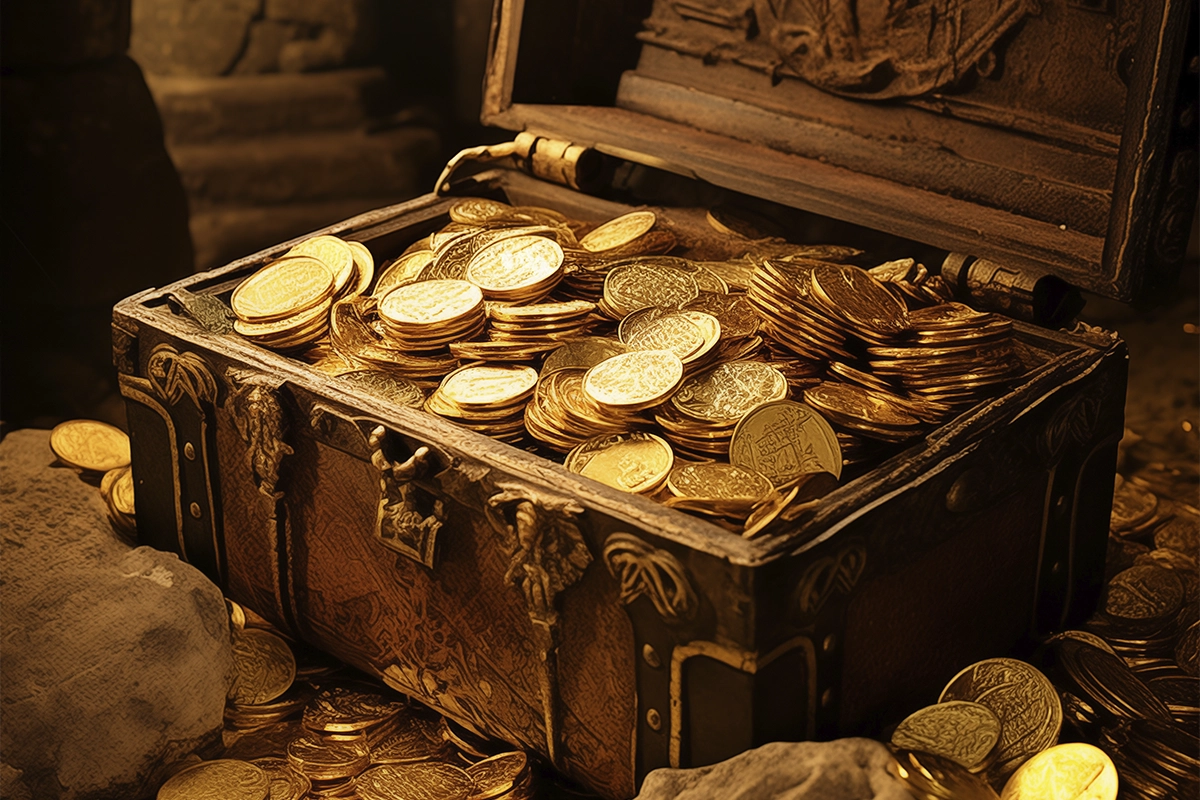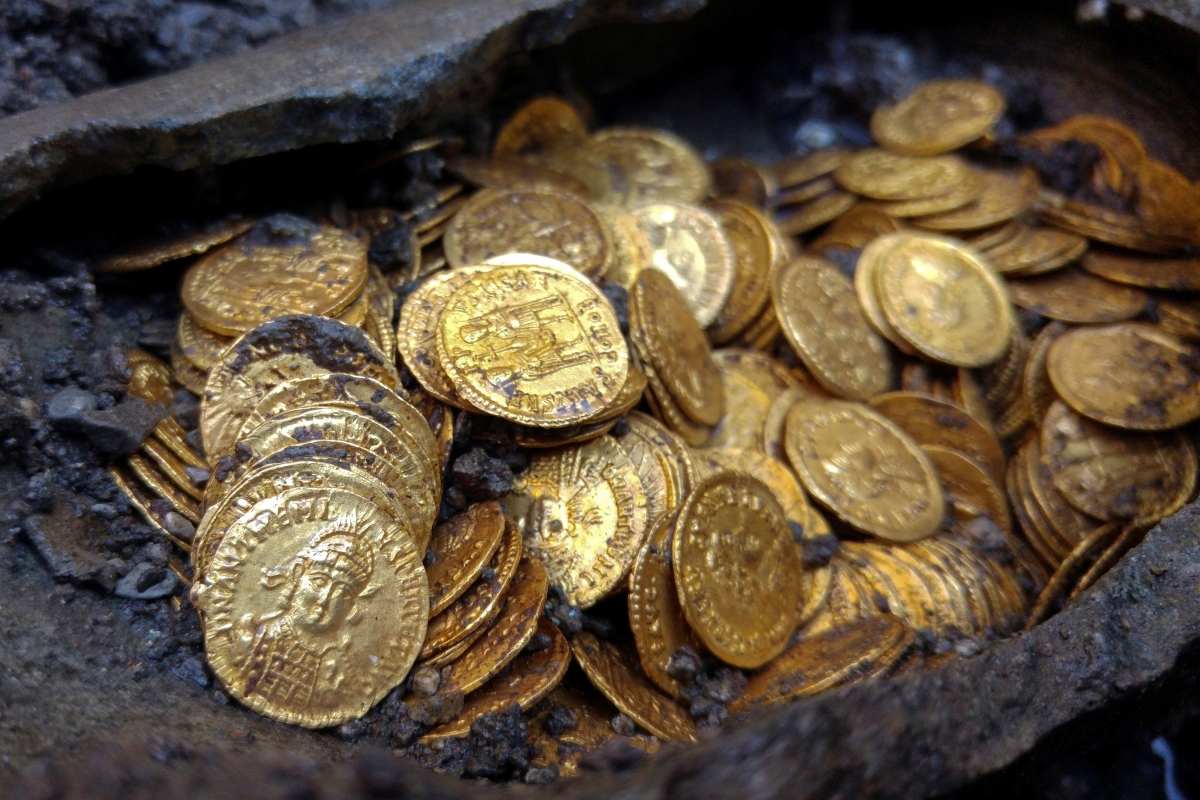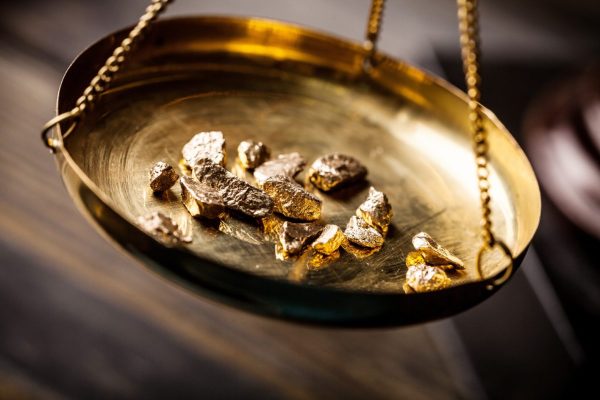A metal detectorist discovered ancient gold coins in the Netherlands, which turned out to be an offering in a ritual worship ceremony. Experts believe that the money left at that spot was “devil’s money,” an offering to pagan gods. The place of worship was probably related to the summer and autumn equinoxes, thanks to the discovery of holes from stakes that were aligned with the seasons.
A metal detector recently found a cache of more than 100 gold and silver coins buried underground in the Netherlands, prompting archaeologists to come and investigate the site further. But knowing now why the coins were there, perhaps archaeologists should have left them alone.
According to a study published in Medieval Archaeology, the coins, which had been buried for 1,300 years in the Netherlands, were most likely used in worship rituals, while further away from the site, archaeologists discovered the remains of a 7th-century open-air place of worship. It is more than likely that the coin cache was what was known as “devil’s money,” coin offerings that were common in pagan places of worship.
The metallurgists made the discovery near Hezingen, a small village near the Dutch border with Germany. The coins date from around 700 AD—including some rare finds from the mints of the Frankish Empire—and were found alongside metal jewelry in 2020 and 2021.
There were many clues that helped archaeologists conclude that the site where the coins were found was once a place of worship. There were rows of posts, evidence of a large dwelling in a clearing near an ancient crossroads on prominent elevated ground, remains of animal sacrifices, and more. They also concluded that the gold coins and jewelry had been placed there at intervals of more than 100 years and were scattered among the animal sacrifices, making it clear that the site once served as a place of ritual sacrifice to pagan gods.
Archaeologists, led by Jan-Willem de Kort of the Netherlands Cultural Heritage Agency, found signs of an old structure, probably dating from the 6th century, as well as 17 holes for wooden posts that aligned with the spring and autumn equinoxes, linking the site to seasonal harvest rituals.
“The place of worship was probably connected to a nearby settlement of high prestige with a closed house of worship or ceremonial building,” the authors of the study wrote. “The offerings may have been associated with fertility rituals, as the pillars were aligned with the sunrise and sunset during the spring and autumn equinoxes.”

In total, gold and silver coins were discovered in three areas. A single gold coin was found in one area, while 24 fragments or whole gold coins were found in another, along with silver and gold jewelry. The third area contained gold coins and jewelry. “I believe that this place of worship was mainly used by the local elite to emphasize their own prestige, and of course, this is mainly achieved with valuable objects,” said de Kort, according to Phys.org. “The finds at the other places of worship are probably more the result of personal offerings and, as such, less valuable.”
The use of the site by the elite and the timing of this raises questions about the rise of Christianity in the region. Use of the site was restricted in 700 AD, according to the study, earlier than the rise of Christianity in the region, leading the study’s authors to conclude that the region’s leaders may have converted to Christianity earlier than others.
As distinguished missionary texts report, in order for pre-Christian groups to convert to Christianity, they would have to stop worshipping pagan gods and stop sacrificing the so-called “money of the devil.” Given that Hezingen was abandoned in the early 8th century, when Christianity began to spread, the authors of the study assume that the city’s leaders—who were wealthy, as evidenced by the value of the gold and silver—were among the first in the region to convert to Christianity.





